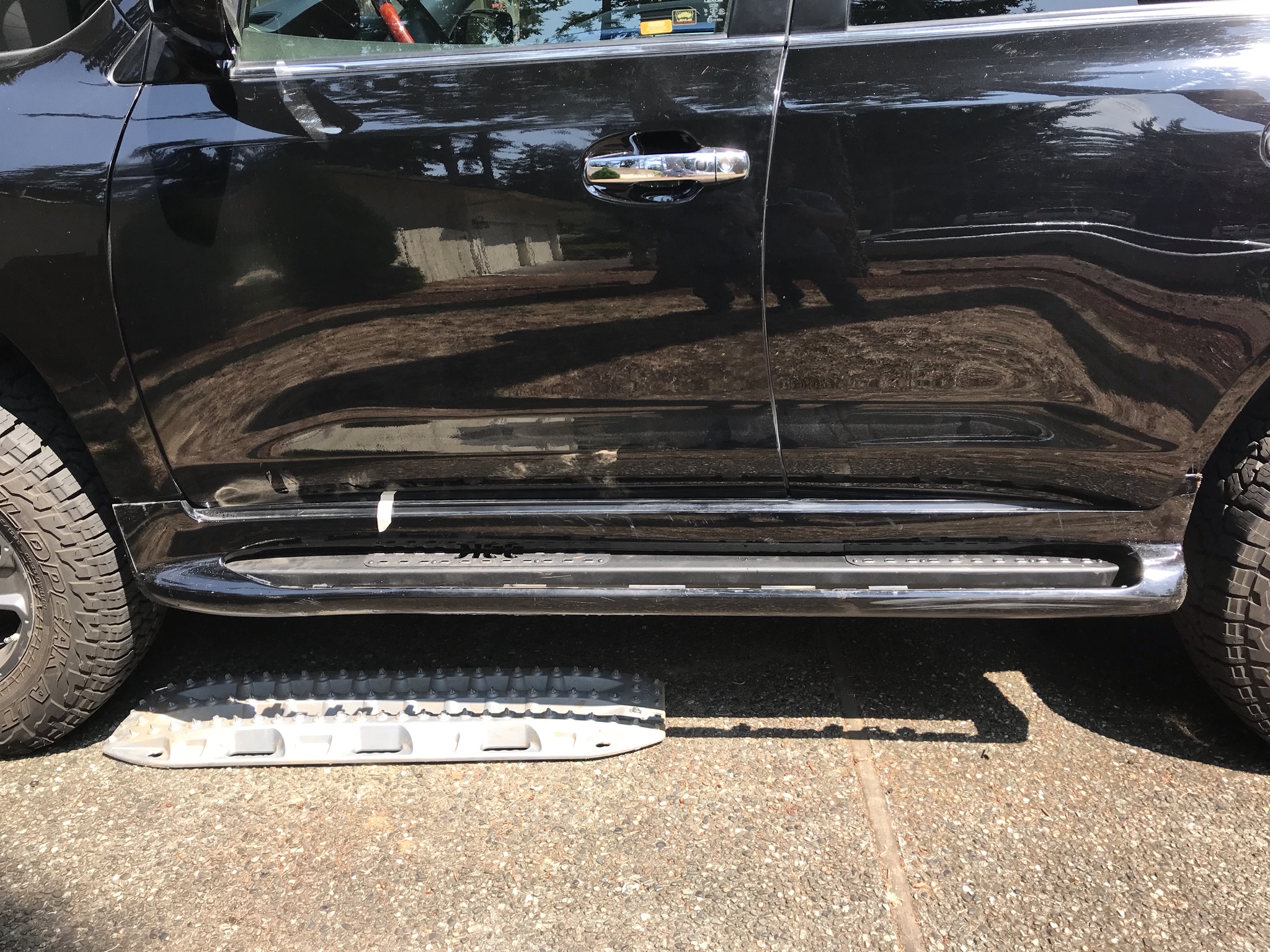I took my steps off to install the sliders, then temporarily re-installed over sliders to make the cut:


Follow along with the video below to see how to install our site as a web app on your home screen.
Note: This feature may not be available in some browsers.
This site may earn a commission from merchant affiliate
links, including eBay, Amazon, Skimlinks, and others.

If I remember correctly, you have to enlarge an existing hole for the rivnut.I’ve read as much as I can and have gone over the SLEE instructions a hundred times. Maybe this will become obvious when I actually put the sliders to the body but I can’t figure out one thing.
On the LX do you actually drill a new hole or just enlarge an existing one for the rivnut? The SLEE instructions say nothing of drilling a new hole but I’ve seen at least one mention in another thread that it must be done.
That's correct. You need some random sized bit like 19/32. Some people go smaller and waller it out some.If I remember correctly, you have to enlarge an existing hole for the rivnut.
Yes that's where they mount. Your sliders appear to be a bit different than mine. Mine don't have that small lip sticking out and the holes are on the straight part.I’d rather ask stupid questions here than guess. Is this where the lights mount to the slider?View attachment 2962502
They shoot into the slider which illuminates the holes in the step pads, I believe.The lights shoot out sideways and not down?
The lights face the outboard portion of the step. Light is mounted vertically. Photos are of my installationThe lights shoot out sideways and not down?
They shoot into the slider which illuminates the holes in the step pads, I believe.
Sideways.. but you still get a lot of light.The lights shoot out sideways and not down?
interesting! It could be the camera angle, but do they hang down below the slider mounts? As in, they may get knocked off on a scrape?sideways.. but you still get a lot of light.
Photos are of my installation
I think it may be the angle. They mount from top of slider, so don’t end up below. No comment on his lock washer placement.interesting! It could be the camera angle, but do they hang down below the slider mounts? As in, they may get knocked off on a scrape?
Any reason you have lock washers on the bolt side?
View attachment 2962741
interesting! It could be the camera angle, but do they hang down below the slider mounts? As in, they may get knocked off on a scrape?
Any reason you have lock washers on the bolt side?
View attachment 2962741
No idea. Ask SLEE. They did the installation.interesting! It could be the camera angle, but do they hang down below the slider mounts? As in, they may get knocked off on a scrape?
Any reason you have lock washers on the bolt side?
View attachment 2962741
Interesting!No idea. Ask SLEE. They did the installation.
Must have been the intern responding to your question. LOL!Someone set me straight:
I was test fitting all the things when I noticed one of the bolts wouldn’t thread into the captive nut on one of the arms.
At first I thought, “no big deal, maybe some power coat stuck in there.” But it was a much bigger chunk of metal. I send these pics to Slee, and they respond back with “tap the nut.”
And then I responded back with, “Please verify the thread size to tap with or send me one.”
And then get this message:
There are ultimately four ways to handle these imperfections;
- Use a pick tool and try to remove
- Use the bolt and thread in by hand with a rachet and use the bolt as a thread chase
- Use a Thread chase
- Use a Tap
It’s definitely not PC, the bolt won’t budge it, and a pick didn’t work. Maybe the nut was damaged when they welded it on?
I’m a little annoyed. These things weren’t cheap, and now i have to deal with fixing this before I can install. I don’t have the size, so I have to order and wait until it arrives. Plus, all time I wasted e-mailing and complaining on here
Would you be annoyed as well or just deal with it and move on?
View attachment 2972134
View attachment 2972156